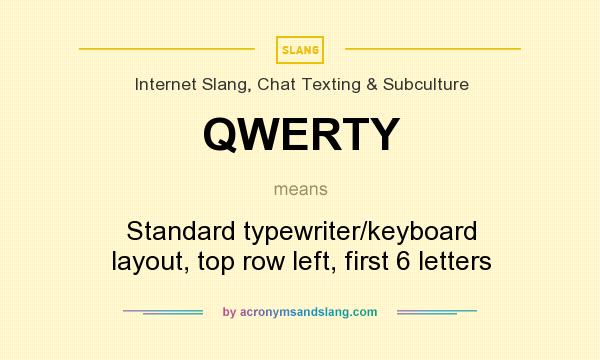

- #Standard typewriter keyboard driver#
- #Standard typewriter keyboard full#
- #Standard typewriter keyboard free#
Such is relayed by Chuck Peddle, lead designer, in Bagnall's book:

#Standard typewriter keyboard driver#
The initial driver for the decision to go with a small-footprint "chicklet" keyboard was the limitation on physical space for a conventional keyboard, as found in computer terminals of the time. The story of the design of the Commodore PET has been well-researched, and documented, in Brian Bagnall's book Commodore: A Company on the Edge. They got a lot of flack for that, of course - so it was changed into an actual typewriter keyboard with the next model. The engineer tried to explain to Tramiel that this was a stupid idea, but Tramiel was not the kind of guy that's easily swayed, so the thing shipped with a calculator keyboard.

Because - (a) it's much cheaper and (b) they could produce it themselves and/or had a supplier that he had already forced into giving him insanely good prices (not sure which it was) So when his chief (computer) engineer approached Tramiel about a keyboard for the new computer he was designing, Tramiel decided they would use a calculator keyboard. That's why the PET's case looks the way it does: Commodore owned a factory in Canada that manufactured steel office furniture, and that's the kind of case these people could come up with.Ĭommodore was also a big player in the electronic calculator business. manufacturing as much of a product as possible in Commodore's various facilities. He was fixated on "vertical integration", i.e. Jack Tramiel - Commodore's founder and CEO - was a penny pincher with no clue about the computer business. Great for low production numbers, getting costly if it turns out to be a success :)) Rather good looking and saving the effort to create castings for each key. They already supplied keyboards for their mid range desktop calculators and came up with a way to save on key labeling by using blank key and glue tiny colour printed metal stickers in each. *1 - Mitsumi in case of the PET keyboard. While the Wikipedia page insinuates a lack of space, it seems that the cassette could have easily been relocated to the top or side of the monitor.Ī standard typewriter keyboard without a num pad could have fitted well without (re)moving the cassette drive. Not to mention that this eased the addition of special/dedicated keys like cursor, rvs or run/stop Going for a calculator type keyboard, made to spec, from one of their existing suppliers (*1) would not only cut cost but ensure delivery as well. That would have been already 10% of the whole unit price.
#Standard typewriter keyboard full#
The PET was intended as a low priced entry level hobbyist system for just USD 795 - there was simply no legroom for a full keyboard.Īt the time a typewriter keyboard like a Suntronic IV (see Byte 1/76 p. Putting aside that 'why not' is a hypothetical question thus a definitive answer can rarely been given, it's rather obvious that the answer might be the same as for why it was delivered with a wonky cassette recorder instead of a floppy drive: John M.Why didn't the original Commodore PET computer use a standard typewriter style keyboard? Clean all of the top rods-especially the Shifting rod-with a greasy cloth Every day.” The Remington 2 had a QWERTY keyboard, and its commercial success led to it being adopted as a standard, even as its design was primarily to prevent the type bars from jamming and not to increase typing speed or ease of use.
#Standard typewriter keyboard free#
The carriage reads “Keep the machine free from dust. This required typists to raise the carriage if they ever wanted to see what was written. The Remington 2 was an upstriking machine, the carriage held the paper type-side down, and the keys would rise up and strike the paper through the ink ribbon from the bottom. 2 was the first commercial typewriter, refined from the original designs of Christopher Sholes and Carlos S. This Standard Number 2 typewriter was manufactured by E.


 0 kommentar(er)
0 kommentar(er)
